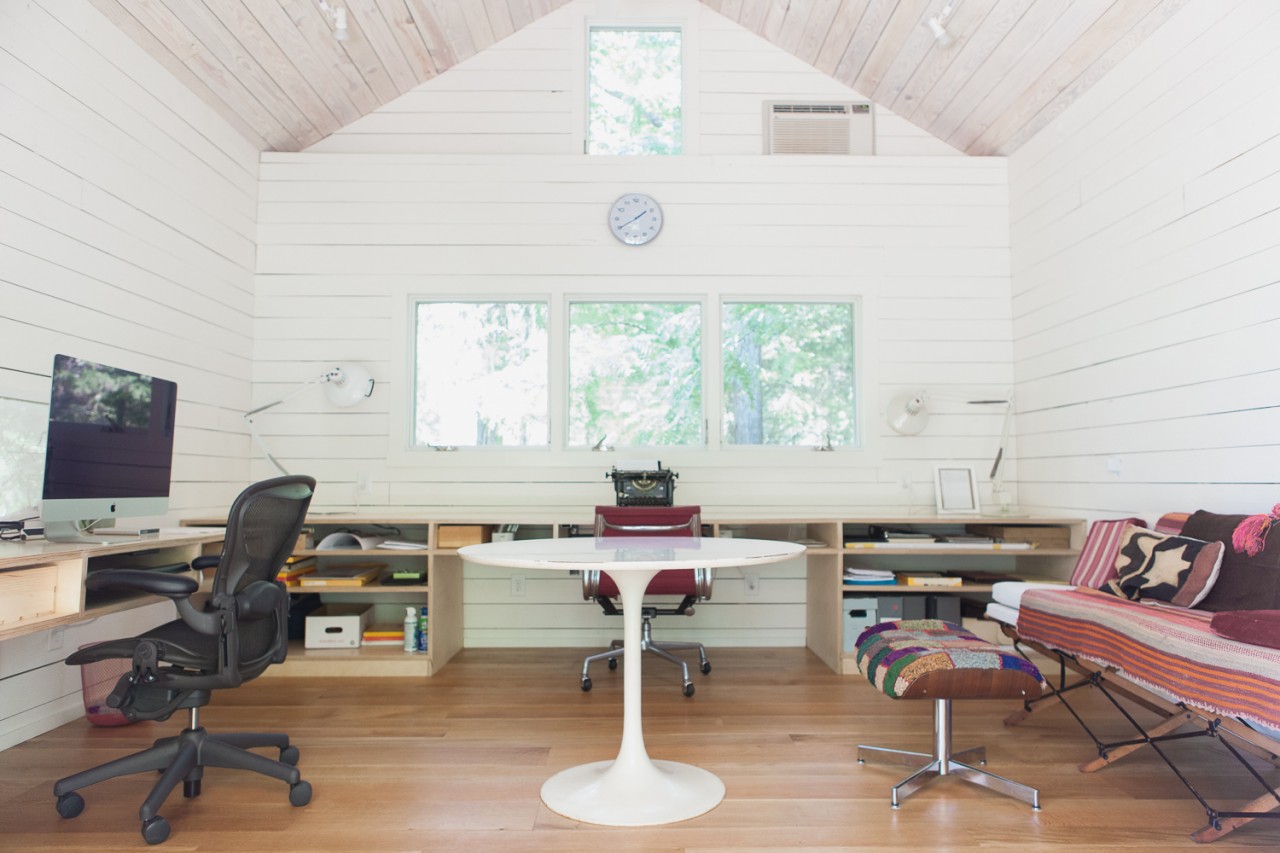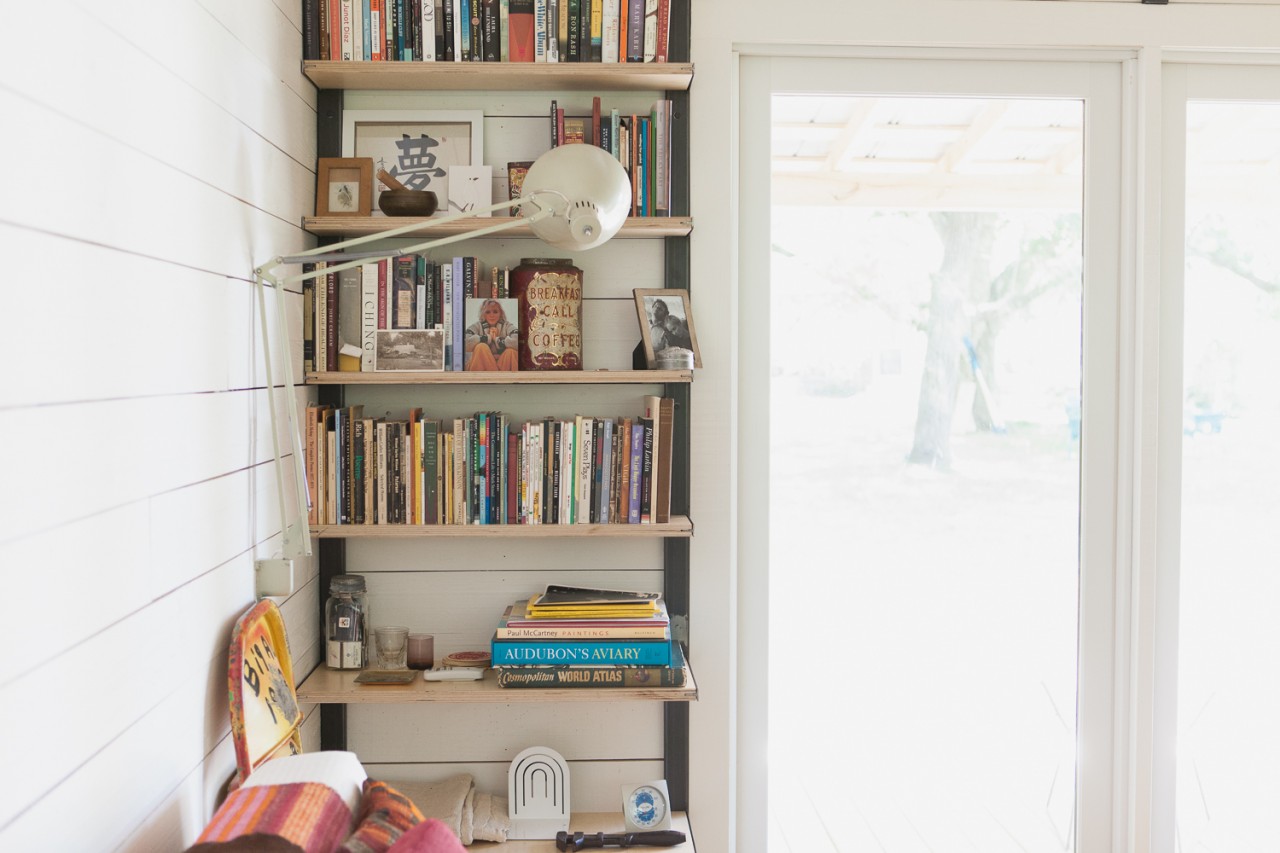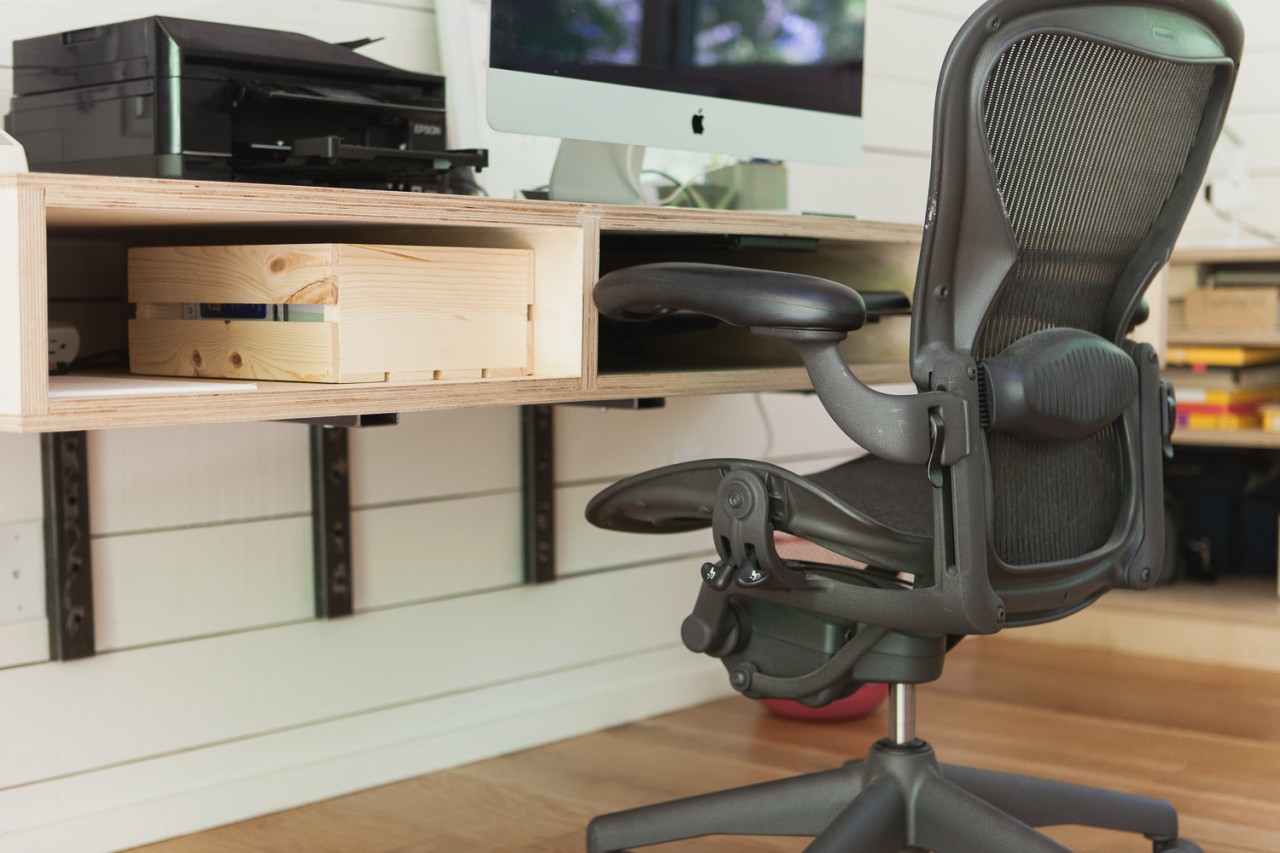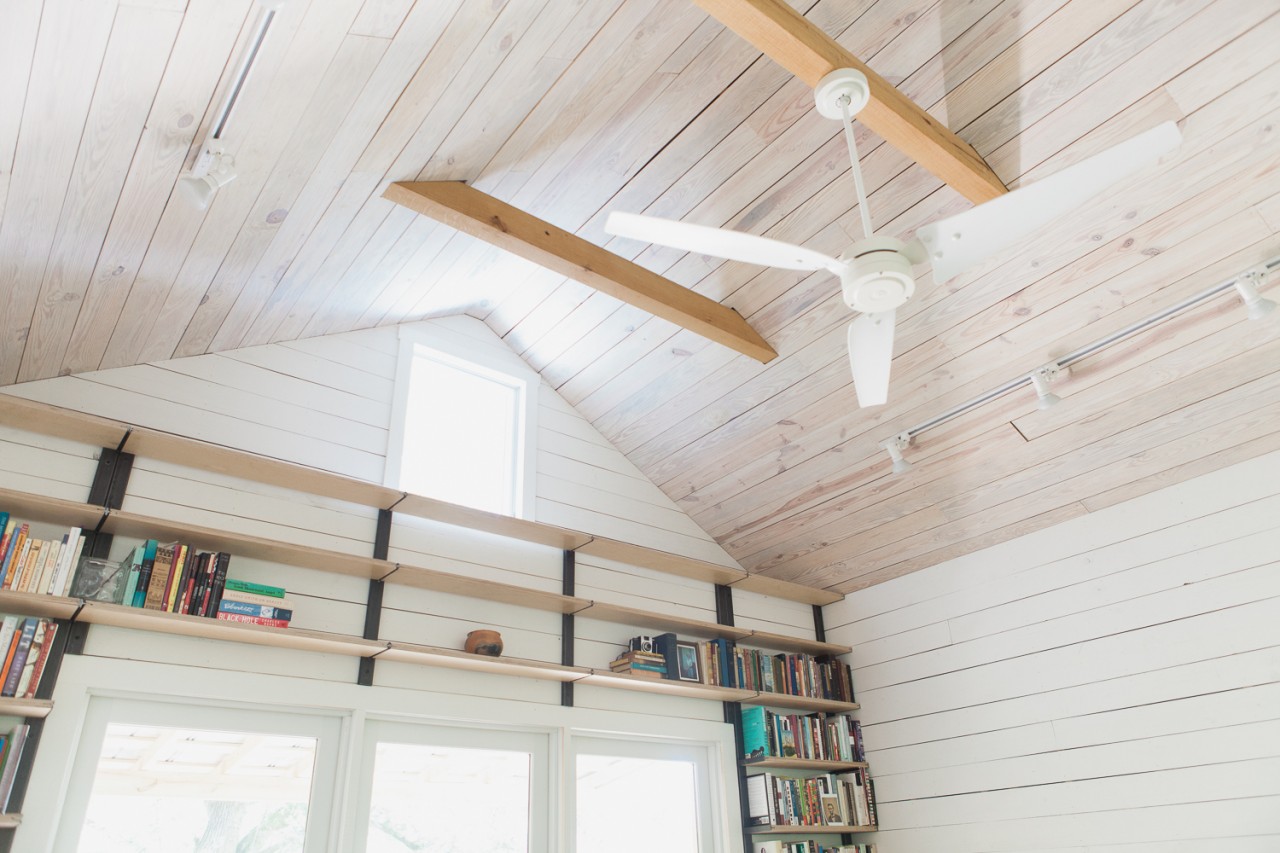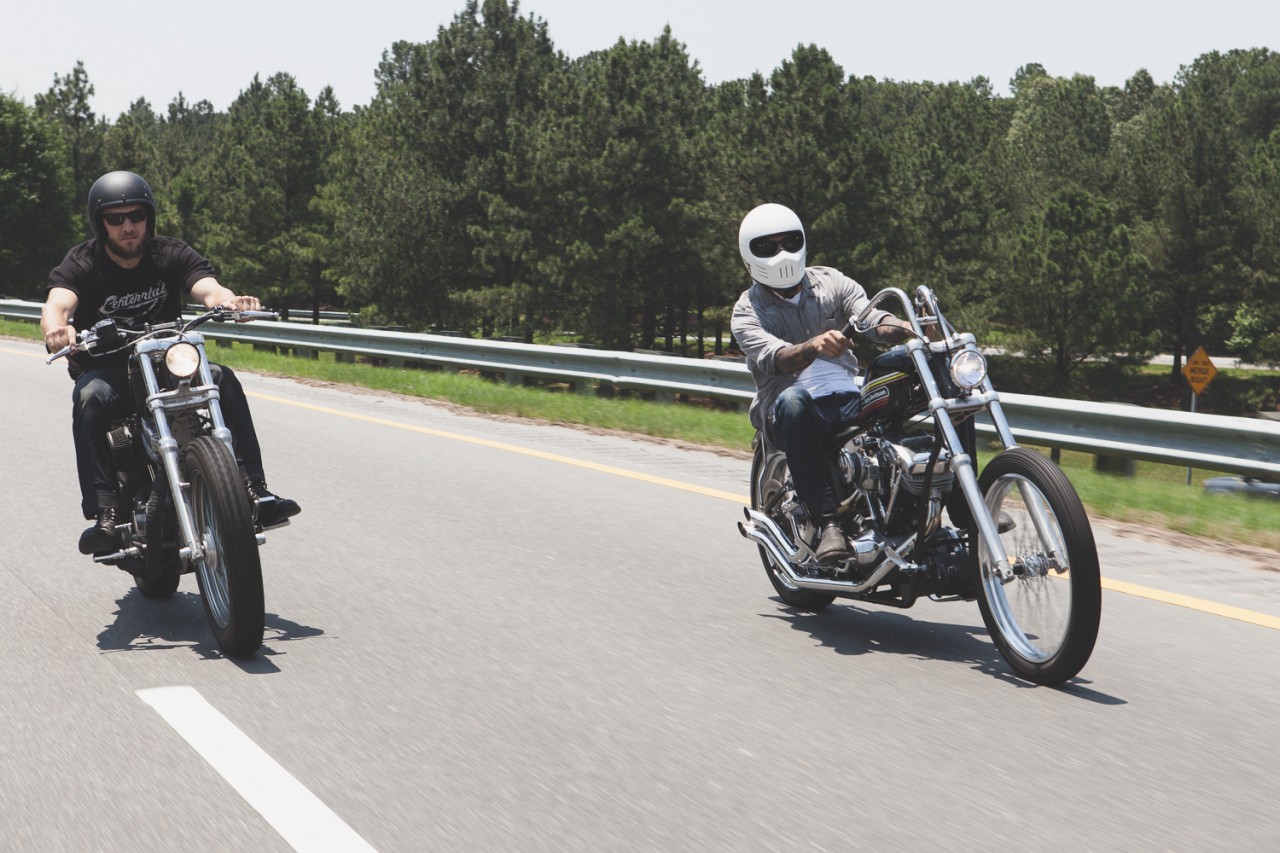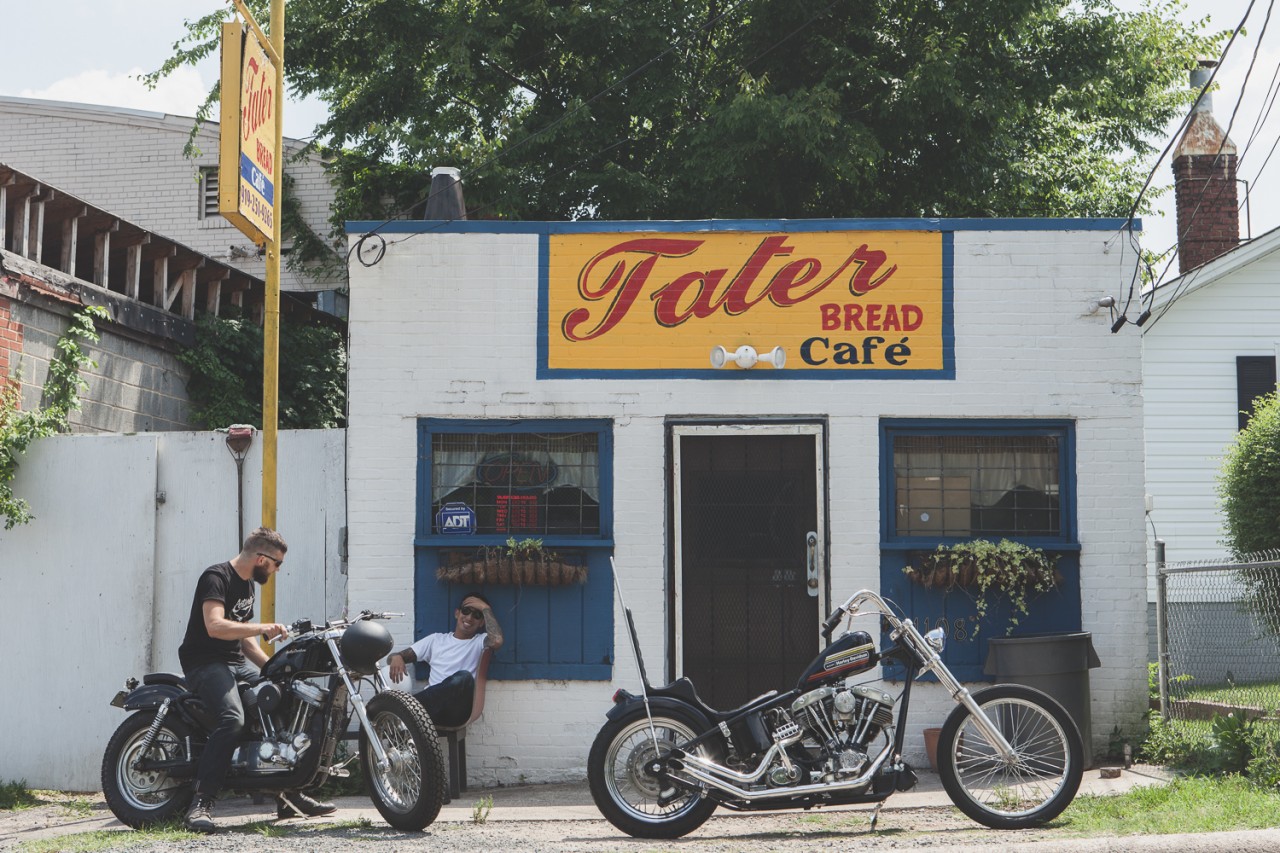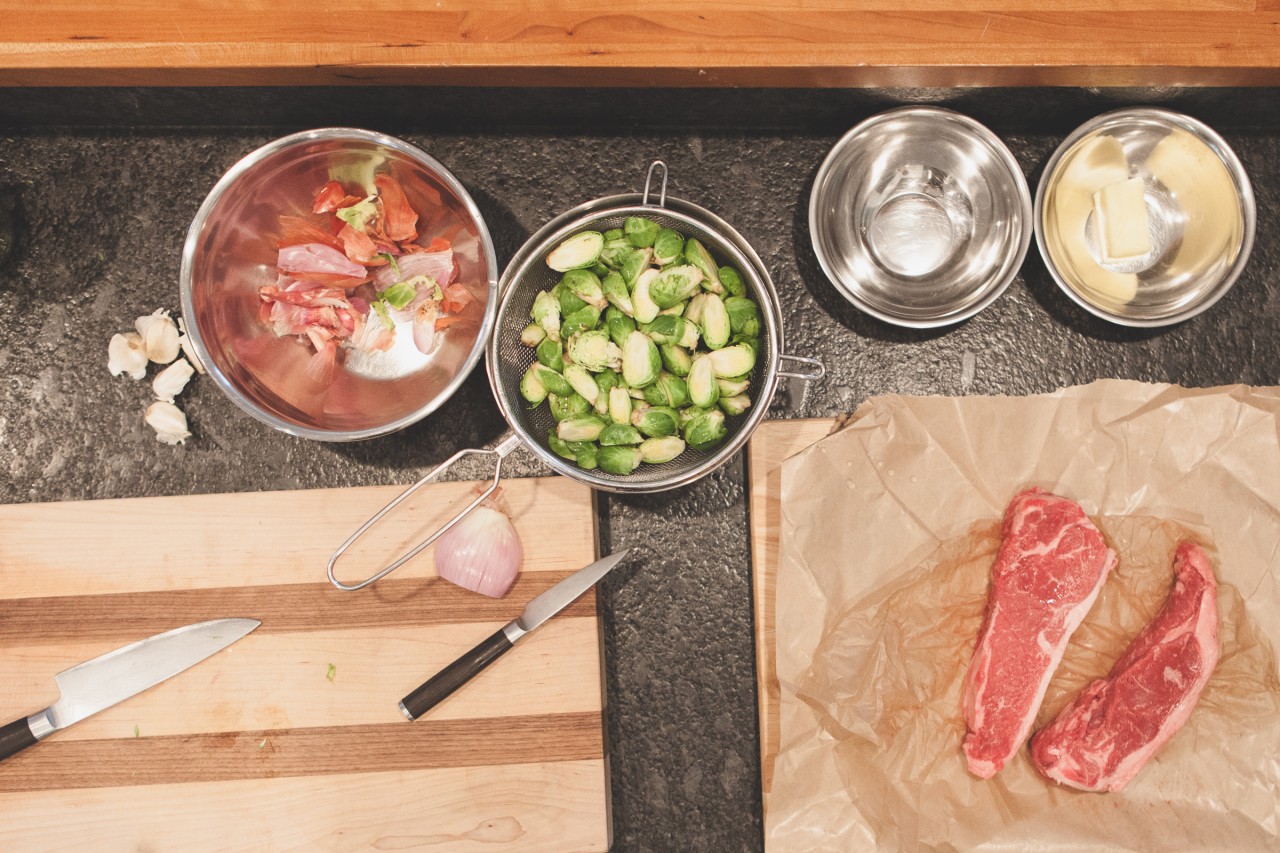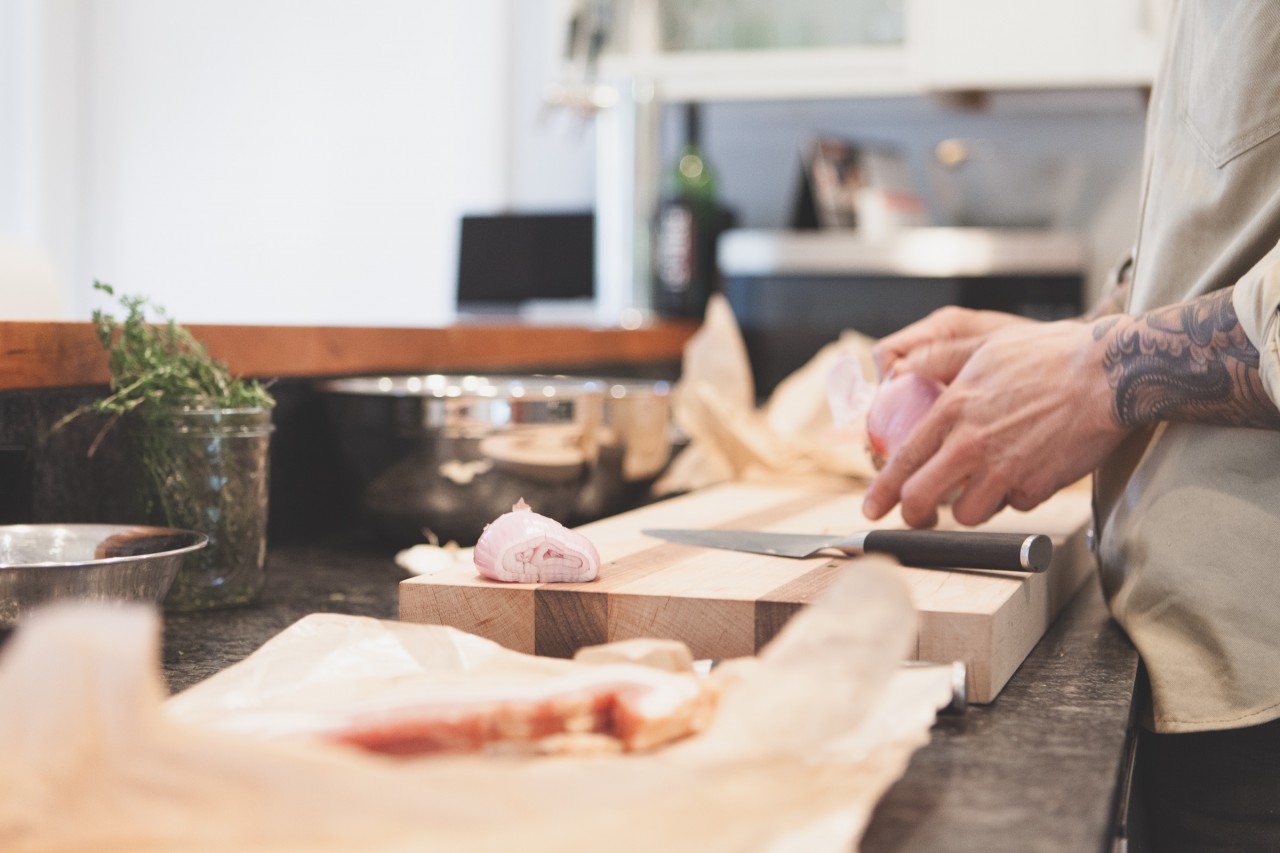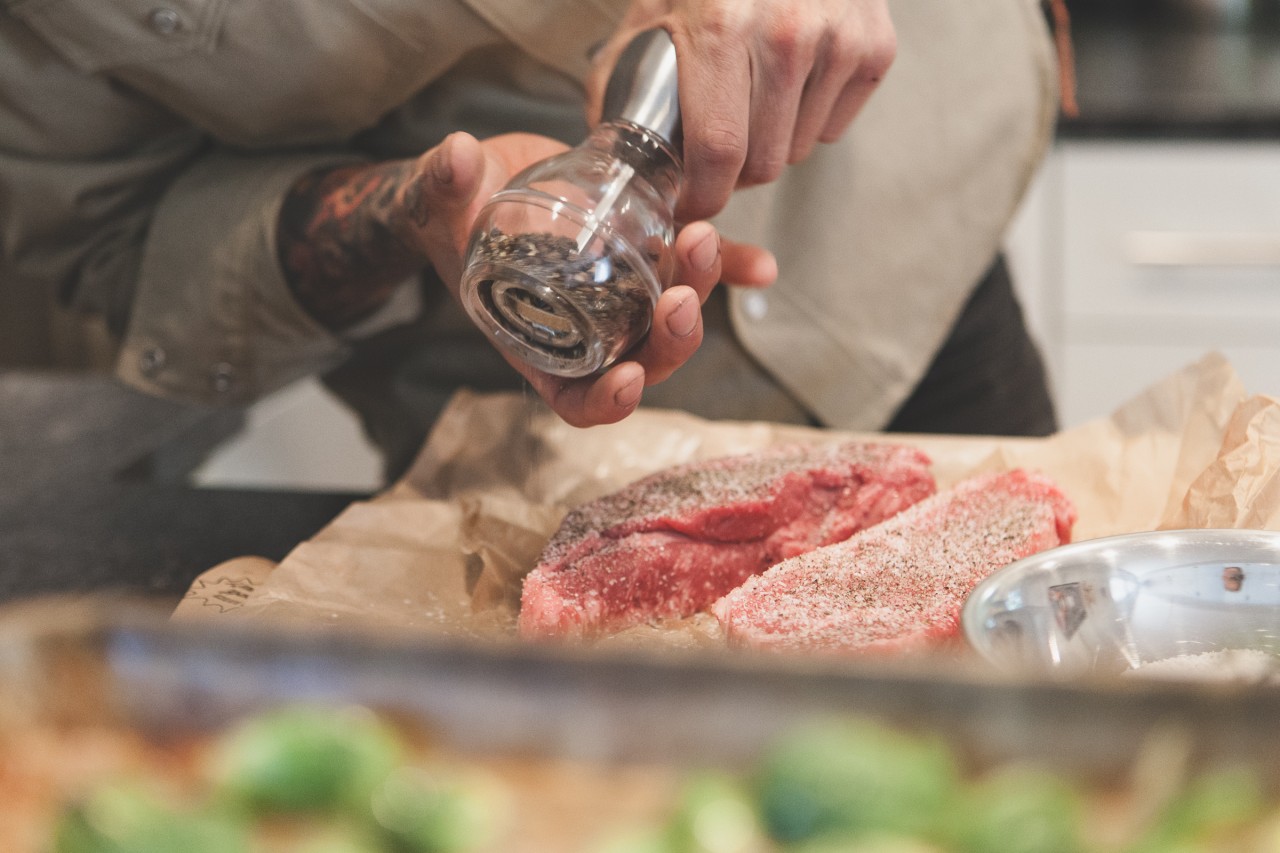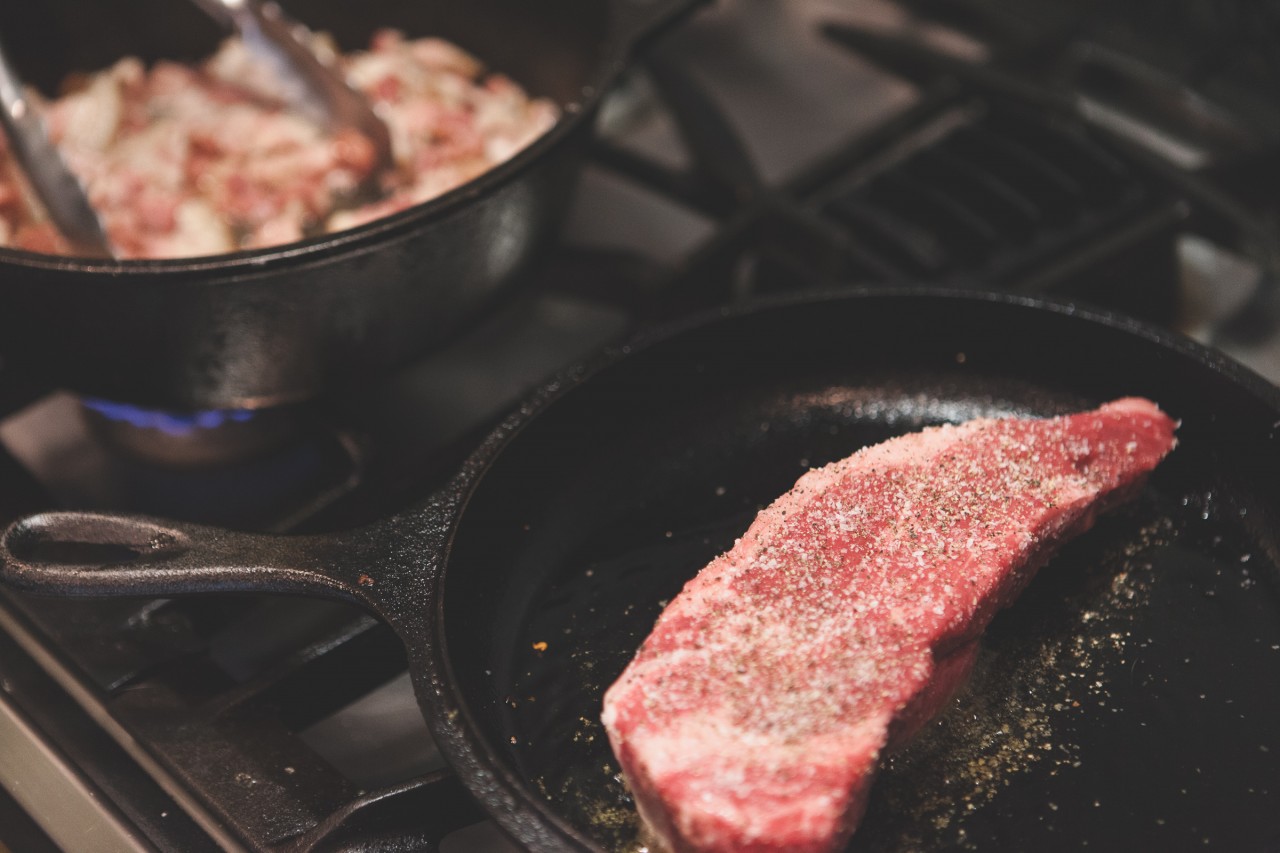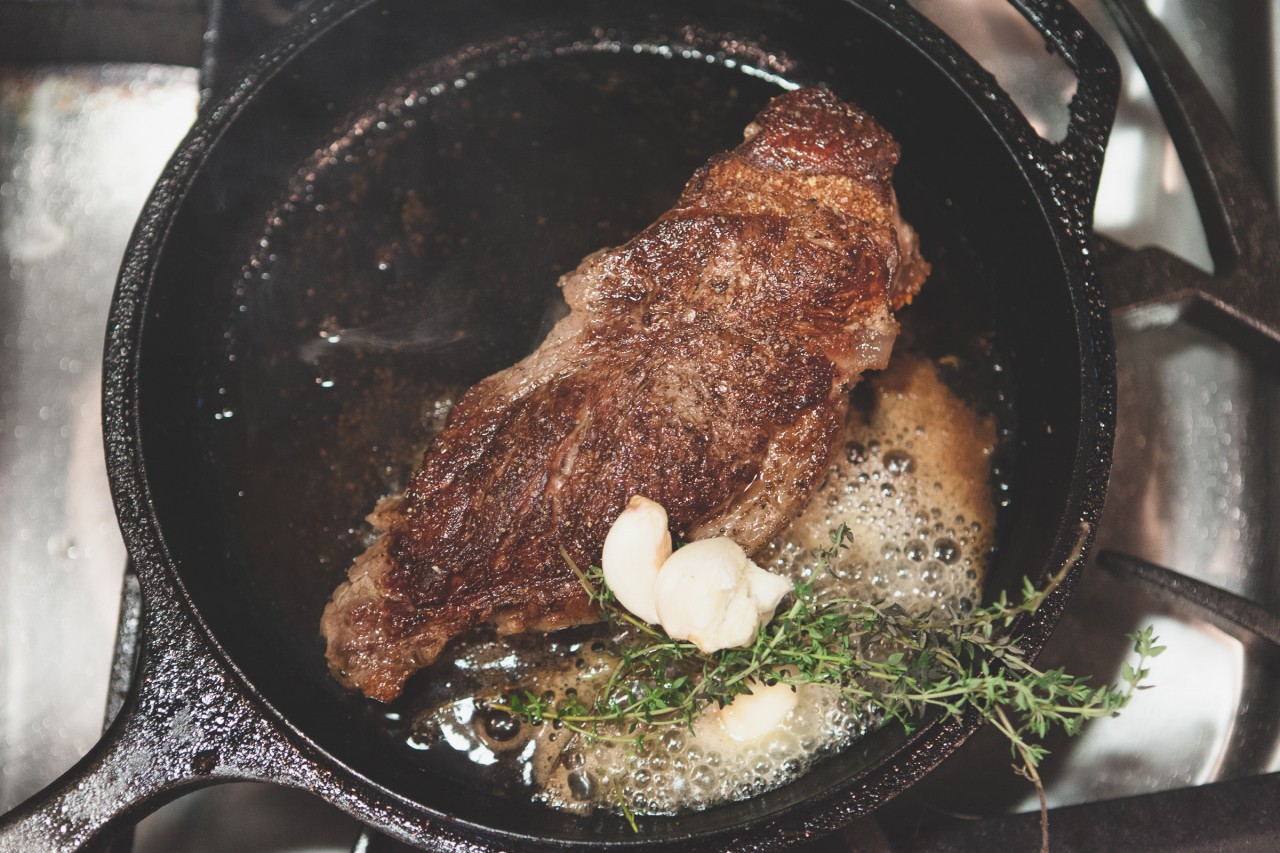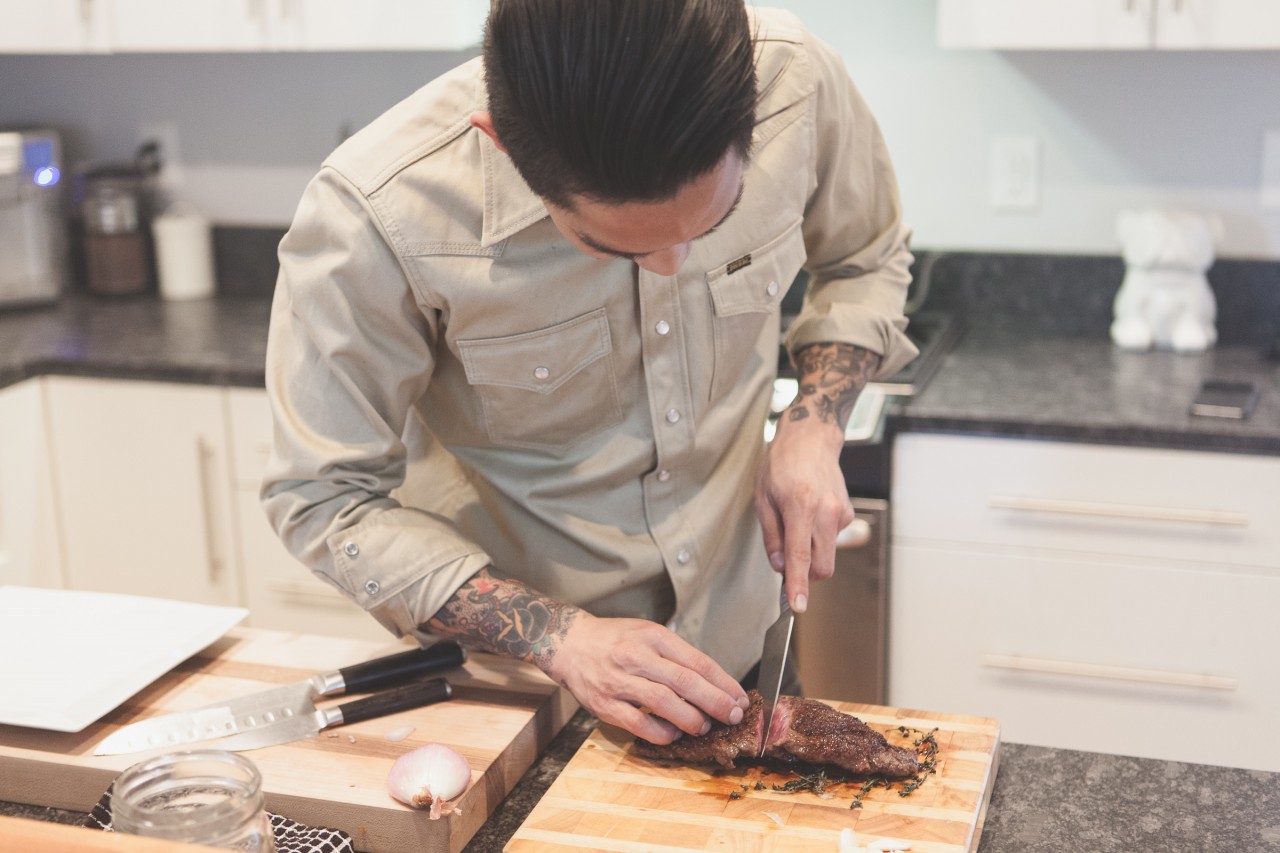Arrowhead
Posted March 20, 2015
Interview by James Stavrinides
Photos by Josh Hoffman
The age of mass consumption and production has finally given birth to its opposite: a dedicated group of artists, chefs, bartenders, baristas, bakers and builders hoping to stem the tide. For them, quality takes precedence over quantity.
Matthew Cronheim and Justin Johnson, both 28, typify this cultural turn. Their company, Arrowhead, has been quietly producing exceptional furniture out of Raleigh, NC, for the past five years. They have no cloying reverence for the past or “the way things used to be,” and it shows: their work, which runs the gamut from chairs to cafe buildouts, is in a class of its own. Arrowhead’s designs are unmistakably new.
We greatly admire what they do, so we jumped at the opportunity for a chat. We caught up with them at our showroom in New York.
Table of Contents
-
Instagram
@arrowhead -
Website
arrowhead-nc.com
Follow Arrowhead
1 Aesthetic


In a world where brands often sell elaborate, sappy narratives along with their products, information on Arrowhead is surprisingly hard to come by.
Justin: We just haven’t had much time to concentrate on that kind of thing, like putting our background out there and figuring out how to promote it. I think it’s something we need to improve over the next few months; for instance, we’re doing a small, 15-second video campaign that’ll lead to a bigger website launch with more information (which is something I think we lack). But you know, for the past year and a half – almost two – we’ve really just concentrated on making stuff. It’s very hard to transition from being in the shop, building, to working on a computer for self-promotion and blogging or something like that. You have to turn your brain off and hit the restart button.
Matthew: We already have to wear a lot of hats, and we’ve known for awhile that focusing on the product is more important than branding ourselves. We see a lot of people in our field who are very blog and image-heavy, but we wanted to focus on putting out work we could be really proud of. Then, later, we can hopefully talk about building an image around that.

So you want the image to come out of what you’re actually doing, organically? Most brands have it backwards.
Justin: Right, and I think we’re still figuring out what we want that image to be. One day we’ll be making a crazy modern fence in someone’s backyard and think, “This is really cool.” But a week later we’ll be working on a very fine piece of furniture and think, “This is where it’s at!” So not only do we have a lot to balance between marketing, management, and building, but we’re also working on narrowing down the categories of objects we make. We can build so many different things that there are very few projects we have to turn down. We almost never say no.
Matthew: Our personalities make us want to do it all, but ultimately we’d really like to do more architectural work and high-end furniture.

Can you give us an example of a project you’ve done in the past that represents this direction?
Matthew: A woman I’ve known for awhile – a writer, photographer, and Duke professor – has an old tobacco farm on her property in Durham. It was in severe disrepair, being used only for storage. Since I live in a tobacco barn that I personally renovated, she got the idea to ask me about doing the same to hers. We started to brainstorm possibilities for the space, which lead into a very collaborative project; she ended up designing it as much as we did. As a photographer, she naturally thinks a lot about aesthetics and how spaces are laid out.
Matthew: We talk a lot about the integration of forms and styles, so if we can synthesize all of our interests in metal work, woodwork, and really fine art – that’s the dream project. When we can put our stamp on every different component of a space, the final product ends up being much more than the sum of its parts. The tobacco barn is a perfect example of what we’d like to be doing more of.
Justin: We really just want to get over the hump of being too typical. The type of work we do is often grouped with super trendy design when it comes to a younger generation – the table with a metal base and wooden top being the classic example – so we look at how we can differentiate ourselves in other ways.


Motorcycles are, as far as I can tell, hugely important to both of you. What’s the draw? Does this hobby inform your design?
Matthew: I wouldn’t call motorcycles a hobby for either of us. Everyone at Arrowhead rides motorcycles, and they’ve been something of a connective tissue for us as we’ve grown as a business and as individuals. Having all grown up within an hour of our current shop, we share a strong connection to the surrounding landscape. Motorcycles are a way for us to experience that landscape together.
Justin: And, practically speaking, motorcycles inform the way we solve problems and build function into our shop and our work. Customizing motorcycles requires a particular kind of creativity and ingenuity that has really helped us in regard to our designs.
2 Beginnings


You two form a pretty perfect partnership in some key ways–particularly your respective specialties and your singular focus in regard to the future of Arrowhead. How did you meet? How did all of this come together?
Matthew: People always assume we’d been doing something else before getting into this. Or – probably because of our age – that we had some major epiphany that brought us here, which is actually pretty accurate. I studied Middle East Politics and Philosophy during my undergraduate years. Then, during my graduate program, I realized I had no interest in office or computer-based jobs. My solution? Start a farm.
So I moved outside of Raleigh and began selling food to a bunch of local restaurants. But after my crops failed during a bad winter, I had a lot of time on my hands to rethink what I was doing. It wasn’t that I got sick of farming, necessarily, but it was an incredibly hard way to make a living.
Carpentry was the next thing on my mind because I had experience restoring old houses (including my own, that tobacco barn I mentioned earlier). Justin was working at one of the restaurants I sold crops to, and it was around this time that we started talking again. He was also getting restless…


Later in this feature, Justin cooks his favorite meal for us.
Justin: Well, I always wanted to get into clothing when I got out of school. I studied textiles in college, which was fine until my senior year. I realized that, since I’d always been a major food nerd, I’d rather just cook for a living. But after six months I felt a weird overhanging doubt about what I was doing; a college degree makes you feel like you should have a “real” job, so I started work at a small advertising firm in downtown Raleigh.
I worked there for a year, did my thing, and eventually felt pretty useless. Cooking, in comparison, was so quick and rewarding: you make the food, you give it to somebody, and they’re immediately happy and eating. But after I went back to working at restaurants, I still wasn’t satisfied. Becoming a successful chef is about so many things outside of what’s going on in the kitchen, which never sat right with me.
At the time I had decent savings from cooking because, when you work at a restaurant, you don’t have time to do anything else. I used that money to rent a tiny space to work on my motorcycle, giving me access to a workbench and some tools. This lead to me doing random welding and fabrication jobs (mostly fixing scooters and motorcycles).
People starting coming to me with odd jobs after word got around that there was this kid in the back of an old warehouse laying down some decent TIG beads. I’d make everything from motorcycle parts to custom milk pitchers for a local barista (he said something about needing the pour to happen at a certain angle). This stuff floated me for awhile after I quit my job.

Matthew: I think the two of us officially met 4 years earlier, but we only kept up through the occasional e-mail – usually about old cars or bikes. Justin reached out to me while we were going through our respective “quarter life” crises.
Justin: I really admired Matthew’s work as a carpenter, so I just said: “I can do metalworking and fabrication. How would you feel about collaborating?” And that was it.
Matthew: We were both soul searching, so we definitely reconnected at the right time.


At what point did you realize your work was special or worth selling? How did Arrowhead become a business?
Justin: My landlord was in my apartment fixing my stove, and he noticed a table I had built. He was like, “Woah! Where did you buy that table?” It was so bad. I just made it because I needed a table.
Still, he asked me to make him one, which I didn’t take seriously because people always ask without following through. But he called the next day to ask again, then again the day after that. This is what pushed me to reach out to Matthew about collaborating. He showed up with a tabletop two weeks later and, after putting it on my metal base, all we could say was, “Damn, that looks awesome.”
Matthew: The work kept coming after that, and we didn’t say no to any of it. Even now, we’ll do whatever it takes to stay busy and keep learning.


And now that you’ve built a reputation, to what extent can your customers dictate what they want? What sort of creative freedom do you have there, if any?
Matthew: It varies from project to project, but it always comes down to the balance between art and commerce. When it comes to making money, the customer who knows exactly what he or she wants is ideal. It’s a very efficient way to do business: you draft a build sheet, make it, and move on. Jobs like this are nice to have, but they can get boring pretty quickly. So, creatively, our favorite customers are those that give us a blank slate.
Justin: Sometimes, in the middle of working “on spec” for someone, we’ll think of little details or touches to make the project more interesting. These diversions always cost us more money and time, but we’ll be happier with our work in the end. It’s important to make the boring projects interesting, to find those gaps or spaces that let you be creative. Because when you successfully do that, you can step back and be proud of what you’ve done.
These diversions always cost us more money and time, but we’ll be happier with our work in the end.

Matthew: At the end of the day, all of this is governed by our workload. Because if we have nothing else going on, we’ll even hang doors in people’s houses. We’ll do whatever it takes to stay afloat. Thankfully, this has kept us from having to take on any loans or investment.
Justin: It keeps us honest. While we were clearing junk out of someone’s backyard two or three weeks ago, Matthew and I joked that, combined, we have 11 years of higher education – and here we are loading bricks. You can’t always be picky.

3 Cooking
Justin: I love the simplicity of this meal. I usually work long hours, so the last thing I want to do is cook a complex, layered meal. I can make this dish happen in the time it takes the bacon to render. It’s also really versatile; if you’re craving asian food, for example, you can swap out the bacon and mustard in the brussels sprouts for some fish sauce, thai chilis and rice vinegar. Ditch the thyme in the steak baste and make a quick chili, citrus, and soy reduction with the pan jus. It’s just one of those dishes that can be taken anywhere.

Seared NY Strip Steak
Ingredients:
-NY Strip Steak
-Kosher Salt
-Fresh Ground Pepper
-Garlic
-Thyme
Preparation:
1) First and foremost, this has to happen in a cast iron pan. Cast iron holds heat like nothing else, and it lets you get a really good sear on the steak. I like to cook this really hot, right below the “hi” setting (unplug your smoke alarms).
2) Pre-heat the pan until it’s smoking hot.
3) Add your oil of choice, preferably one with a high smoke point. I usually use a mixture of canola and olive oil.
4) Generously season both sides of the steak with salt and pepper before throwing it in the pan.
5) Let it get a good sear on each side, then cut the heat (four minutes or so on each side, but it really depends on the cut of meat).
6) Once the heat is off, throw in a tablespoon or two of butter, some fresh sprigs of thyme, and a couple cloves of garlic. Let everything sizzle while the butter melts, then tilt the pan and use a spoon to baste the mixture over the steak. Do this for a minute or two to let the flavors penetrate the meat.
7) Take the steak out of the pan and let it rest for a solid ten minutes.
8) Once the steak has rested, enjoy what you’ve made.


Roasted Brussels Sprouts
Ingredients:
-Brussels Sprouts
-Bacon
-Shallots
-Whole Grain Mustard
Preparation:
1) Like the steak, this should happen in a cast iron pan.
2) Pre-heat your oven to 475°.
3) Cut 4 strips of bacon into chunks.
4) Over low heat, render the bacon in a heavy cast iron pan; this will take a solid 30-40min. The lower and slower you cook the bacon, the more fat you will render out.
5) While the bacon is rendering, slice the brussels sprouts and lay them on a baking sheet. Toss them in a good amount on olive oil, salt, and pepper before throwing them in the oven. Bake them for 15 minutes or until the edges start to brown and char. Take them out of the oven and set them aside.
6) Once the bacon renders, drain most of the excess fat out of the pan. Slice some shallots and toss them into the bacon with some of the drained fat. Crank the heat up to about medium high, and let the shallots cook with the bacon for 3 or 4 minutes.
7) Finally, toss the roasted brussels sprouts into the pan with everything else and mix it all together (try to coat everything in a little bit of bacon grease). Cut the heat and add a tablespoon of whole grain mustard. Mix and serve.

4 Conclusions


Your ages probably come up a lot; neither of you fits the mold of who most people expect to be doing this kind of work.
Justin: Matthew said once, “If I shaved my beard before walking onto a job site, we might get asked to leave.” Down south, here in North Carolina, everyone who does structural work is more-or-less the same guy.
Why do you think that is?
Matthew: I was always frustrated that there was never a shop class at my high school, but it does make sense. Kids growing up in middle class families these days are never told: “You could be a carpenter!”
Justin: The typical line is to go to college, become a doctor, lawyer, or whatever pays. We’re definitely both products of that culture. But if my kid said he wanted to be a mechanic, I’d be pretty pumped.

Matthew: We’re also taught to buy furniture from Ikea or jeans from Levi’s: whatever we can get for as cheaply as possible. And as soon as any of those things don’t look like how we want them to look anymore, we throw them away. I think that mentality has really shifted our culture’s idea of quality. Now “quality” is synonymous with “cheap;” the cheapest thing is the best thing. I don’t know, I just think things have changed in regard to what’s considered an acceptable product, and that shifted our culture’s focus away from craftsmanship in general.
Justin: Building something in a quality manner is something you have to do at a certain pace, which I don’t think many people our age understand: how long it actually takes to do something (or, on the other hand, how long it actually takes to appreciate something). We have to remind ourselves every day to slow down.

As the company’s profile continues to grow, you’ve been getting lots of inquiries from local design students interested in either joining the team or starting their own business. What advice have you given them?
Matthew: The best piece of advice we can think of to give anyone considering a life of craft work is: “If you can think of anything else you’d like to do, don’t do this.” This is a difficult business to get into, and the work itself can be dangerous and exhausting. You’re also competing against a world of cheap crap. That being said, many of us who find ourselves in this industry can’t imagine doing anything else. The reward is in the work itself.
If this rings true to anyone reading this, you may find a place here.
If you can think of anything else you’d like to do, don’t do this.

What do you want your legacy to be?
Justin: With Arrowhead, we want to show kids that it’s okay to work with our hands, and that you should work with your hands. At the end of the day, the world is a much richer place when you can create the objects that fill your life. I’d love for our creations to really resonate with some 16-year old kid who finds our stuff online. And if we could inspire him or or her to make something, that would be even better.
And I think as our work gets more popular, we want more people to take notice of North Carolina. We want the world to know that people are still here doing interesting things.
Matthew: We also ask ourselves: what do we own that we could pass down to our grandchildren? Do people our age keep anything that’ll last that long? We want our work to outlast us. So if we can make something that does – that someone else wants to pass down their children – that’d definitely be enough me.

